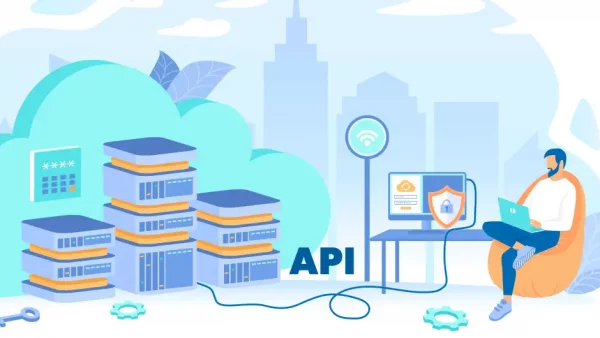Why Headless CMS solutions became such popular last months? In this articles we’ll introduce differences between default CMS and the headless CMS

Traditional content management systems have completely dominated the Internet for more than a decade now: approximately one in two websites on the Internet use WordPress to serve content. Almost every tech enthusiast is familiar with them, understands how they work, and has a vague idea about their pros and cons.
However, an entirely new type of content management system has been gaining popularity recently, and it operates entirely differently from the way traditional CMS’s do, and that’s headless CMS. You’ve probably heard the term in passing if you’ve remotely kept up with web development. In this article, we’ll go over what it exactly means for a CMS to be “headless”, what are their advantages and disadvantages are, and the most prominent use cases where this type of CMS truly shines.
Headless CMS Explained: What Disntguishes It From a Traditional CMS
Traditional content management systems provide four essential things:
- A database to store and access the data.
- An admin panel with a graphical user interface where admins and editors can log into, add, edit, categorize, and update content.
- An interface with the database that allows you to read from it and write to it.
- A baked-in front-end technology that allows you to design web pages and display them to visitors.
Headless CMS has a lot in common with traditional CMS. It provides access to data stored in the database and has an administration panel that allows for simple content management. From the user’s side it doesn’t differ much from what we know at least from WordPress.
The only thing it lacks is a baked-in front-end technology to help you design web pages. You might be surprised and confused: then what’s the point of a headless CMS if it doesn’t help you design the web pages? How are we supposed to display the content?
This is exactly where the power of headless CMS lies. By decoupling the ‘content management’ from the design and technical details of building a website, it gives its users more freedom over what to do with the data and how to use it.
A traditional CMS usually strongly imposes a certain data structure that we use. In WordPress, we have a strongly defined template: content and associated taxonomies (admittedly, this can be used in many ways, but it’s still a certain predetermined template). Headless CMS does not limit us in this aspect. In many we can design any data structures and even create various relationships between them building really complex structures. Headless CMS allows us to build data structures block by block and at the same time provides ready interface for further data management. Although for efficient data management it is still good to entrust the construction of data structures to people who understand their types or building their relations, it still makes many things faster and easier. Developers can focus primarily on building an efficient and eye-catching front-end layer using API exposed from the headless CMS level.
A headless CMS will easily enable you to use the content you’ve generated in applications, not just the web. You can communicate with the CMS with RESTful APIs in Android, iOS, and Desktop applications and display the content natively and seamlessly in applications. Traditional content management systems don’t have an API-first approach, which makes this far more complicated.

The Advantages and Disadvantages of Headless CMS
Headless CMS stacks are gaining popularity because they offer some real advantages, but they’re not without their drawbacks either. It is important to have a proper view of both if you want to make the correct decision.
The Advantages of Headless CMS
- Platform agnostic: as we mentioned above, a headless CMS isn’t necessarily used to serve a website. It can very easily be repurposed to serve a native iOS or Android application. This can be extremely powerful, especially if you have a central content repository that you want concurrent access to both on the web and through applications.
- More freedom to choose the right front-end framework for your project: many excellent traditional content management systems were held back by the subpar front-end framework they were coupled with. This was even true for WordPress a few years prior, which is why they had to heavily invest in a new front-end framework to not fall behind completely. With a headless CMS, you don’t need to worry about a subpar front-end framework you’re stuck with. You can simply choose the best framework for your project and be sure you can very easily integrate the headless content management system with it.
- Easier maintenance and migration: if you have your content repository separate from the front-end, it is far easier to maintain the project and migrate it whenever something goes south.
The Drawbacks of Headless CMS
- Steeper learning curve: despite all the advantages of headless CMS, it is undoubtedly true that tech-newbies will have a much easier time getting a website up and running with a traditional content management system. The front-end framework coupled with these CMS’s is designed to get the user up and running in the shortest time possible. The same can’t be said for any headless CMS.
- More forethought: with more freedom comes more chances to mess up. This is sadly as true in web development as in life. And since a headless CMS acts primarily as a content repository, it doesn’t hold your hand. That’s why you have to make sure the building blocks of your website are correctly laid down to not mess up. It is harder to mess up with a WordPress website.
The Most Popular Headless Content Management Systems
Despite headless content management systems being relatively new, there are already a few competent, developed options on the market. Below, we’ll go over some of the most popular headless CMS’s and see what they bring to the table.
Strapi
Starpi is the leading open-source headless CMS out there. Its customizability, usability, and flexibility have made it take off in recent years.
It has a growing community of users, and some large names have relied on it to build their data repositories. You can’t go wrong with Starpi.
Contentful
Contentful is one of the best options for SMEs (small and medium-sized enterprises) out there. Its API-driven design and focus on content make it an excellent choice for those companies that want to truly have full control over their content.
WordPress
You might be surprised to find WordPress here, but it is correct. You can use WordPress as a headless CMS with the ‘wp-api’.
Do you want to check the health of your website?

The clear advantage of using headless WordPress is that you can still rely on WordPress’s really extensive and rich ecosystem to build your content.
The downside is that WordPress wasn’t built from the grounds up to be a headless CMS, which creates a bit of dissonance and mismatch when using it. Besides, WordPress is often used with a variety of plugins, and not every one integrates with WordPress’ REST API.
Do I Really Need Headless CMS? Its Use Cases

A headless CMS, much like other technologies, is suitable for certain kinds of projects while it is maladapted for others. There’s no silver bullet in web technologies. In this section, we’ll go over some scenarios that are particularly well-suited for a headless CMS to handle and some scenarios that are unsuitable for a headless CMS.
Suitable Applications of a Headless CMS
- If you want to create a truly fleshed-out front-end using the latest frameworks and the traditional CMS you were planning to use doesn’t provide adequate support for that front-end framework, it is a great idea to go with a headless CMS. Chances are, you’ll see reduced development time and better performance.
- As we mentioned before, if you want a content repository that you’ll access across different mediums concurrently, you should go with a headless CMS. The API-first design will be a great help during development in this use case.
Unsuitable Applications of a Headless CMS
- If you want to create a simple portfolio website for yourself or your business, you likely don’t need anything fancy. You can probably create a great website using a simple WordPress theme and some minimal content. There’s no need to use a headless CMS; you’ll only needlessly complicate the project and increase development time.
Summarizing
Headless CMS is a great solution that can support more custom projects, where there is a need for unusual data structures and there is not necessarily a need to build a dedicated backend layer. However, this is not a solution for everyone – still with simpler solutions it’s much faster to create a website using a traditional CMS, such as WordPress. Still in more complex situations – where we need really complex structures and logic – writing dedicated backend will work. Headless CMS perfectly fills the gap between – it’s a great solution for people for whom a traditional CMS is not enough, and a dedicated solution is a bit too much. If you think that a solution based on such a CMS system is for you – do not hesitate and write to us, we will be happy to talk about it in more detail.
Comments